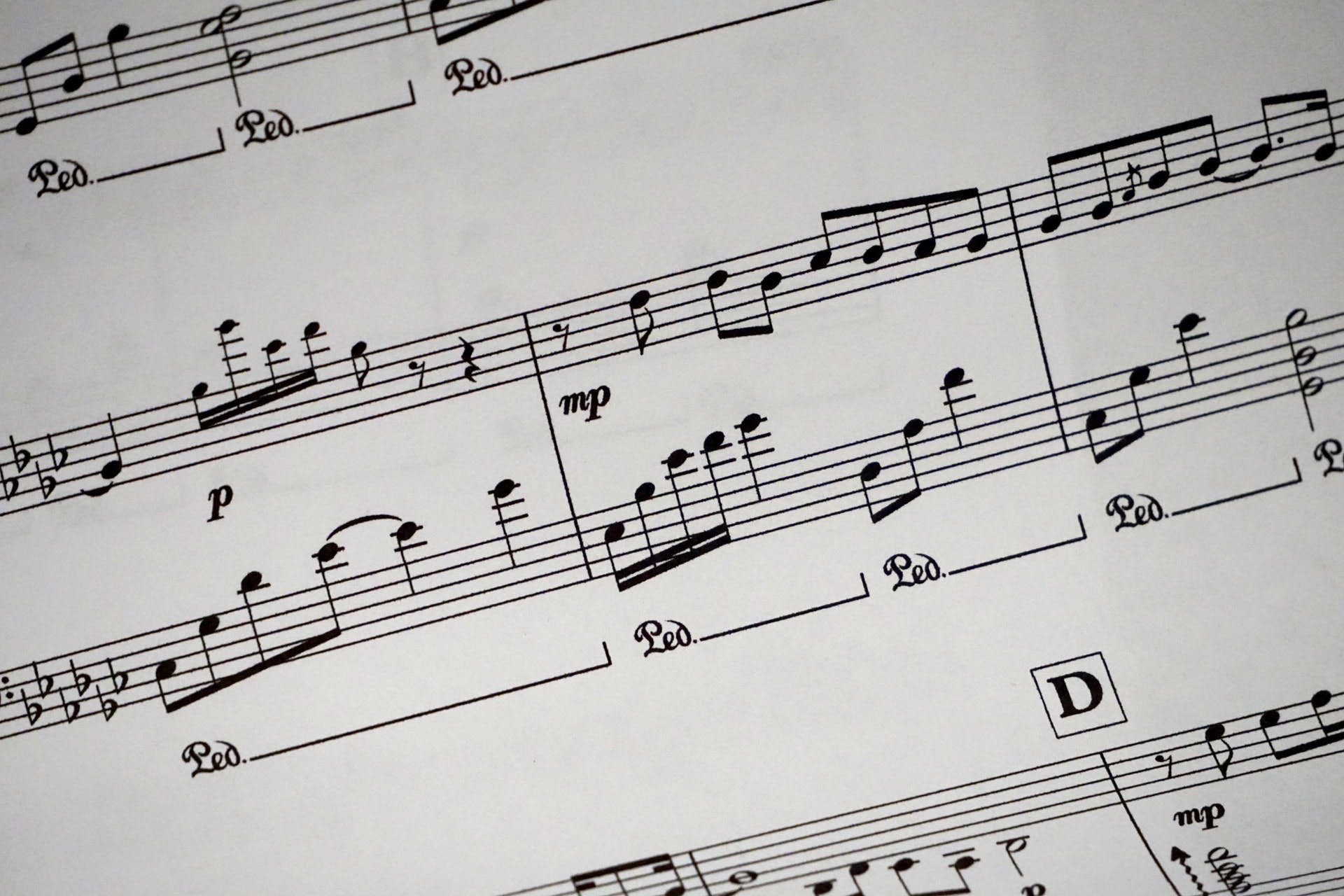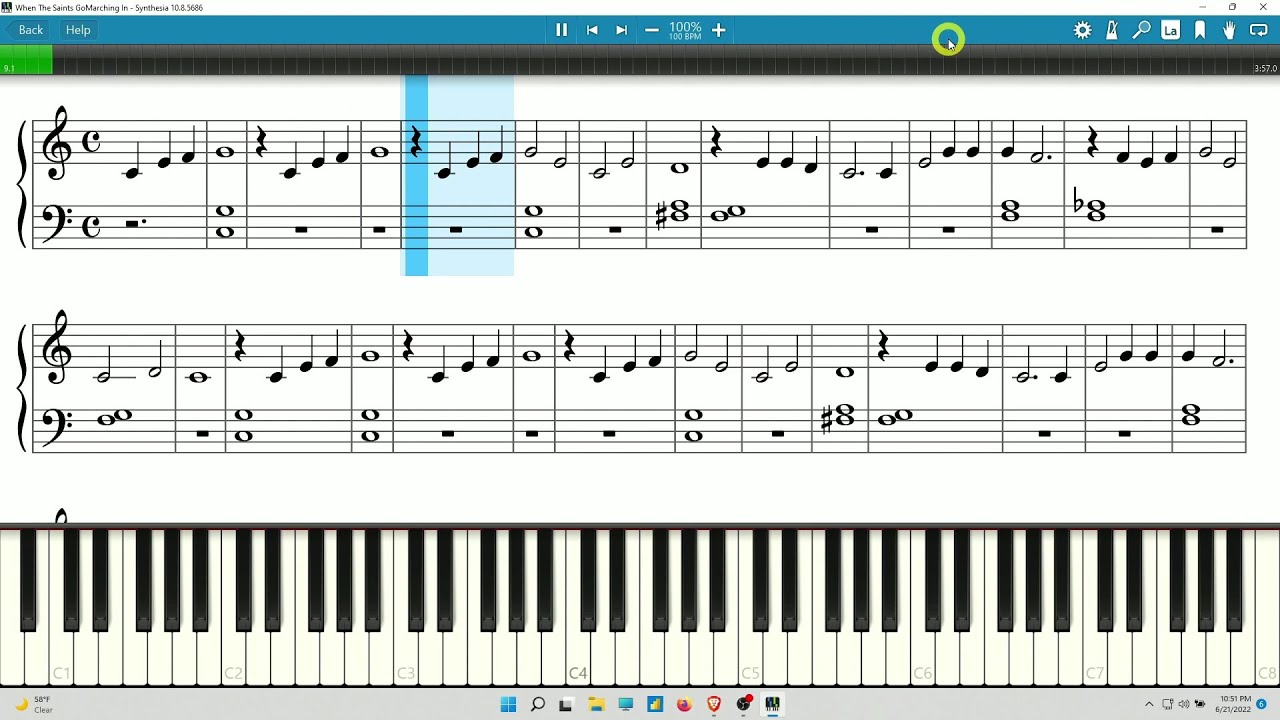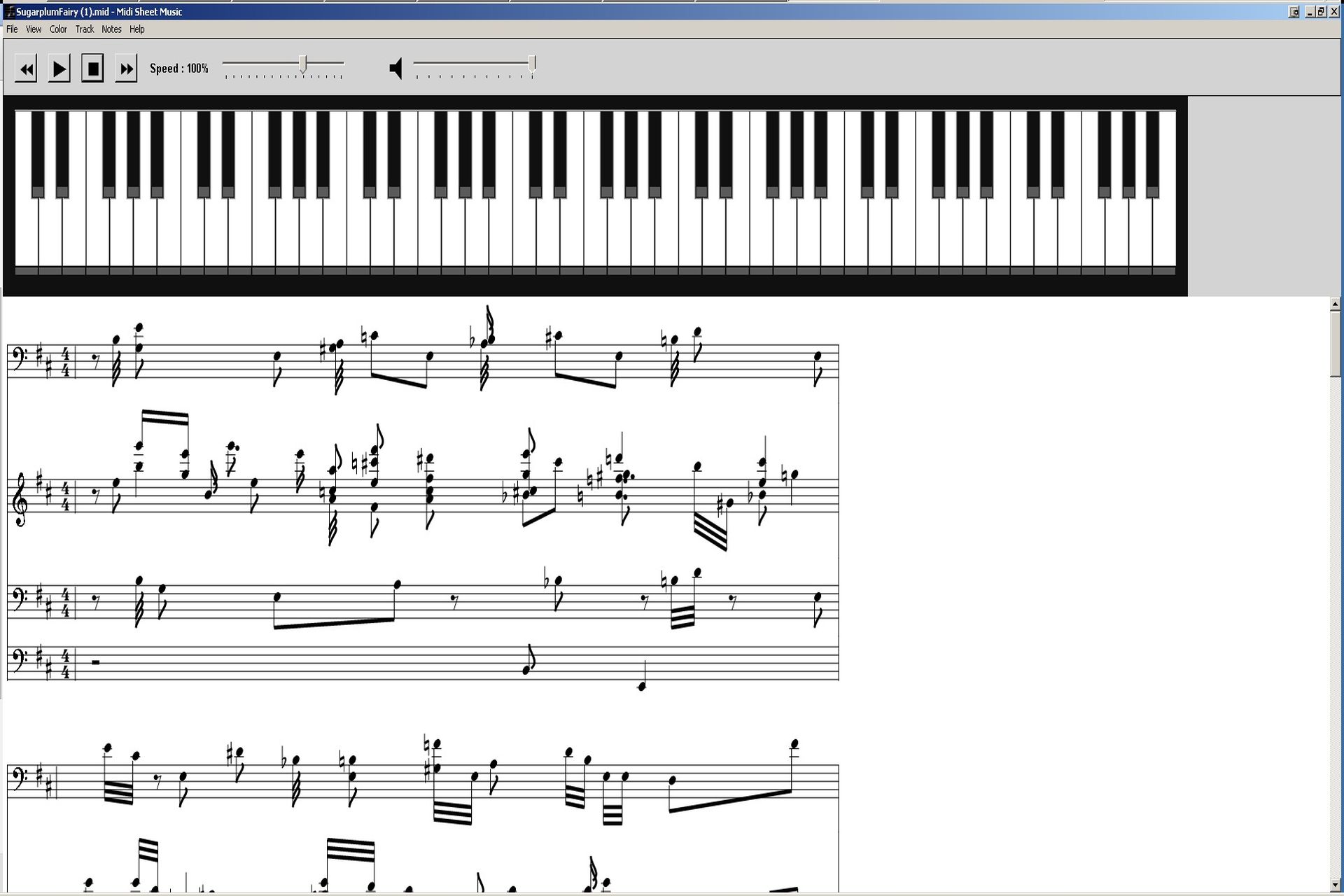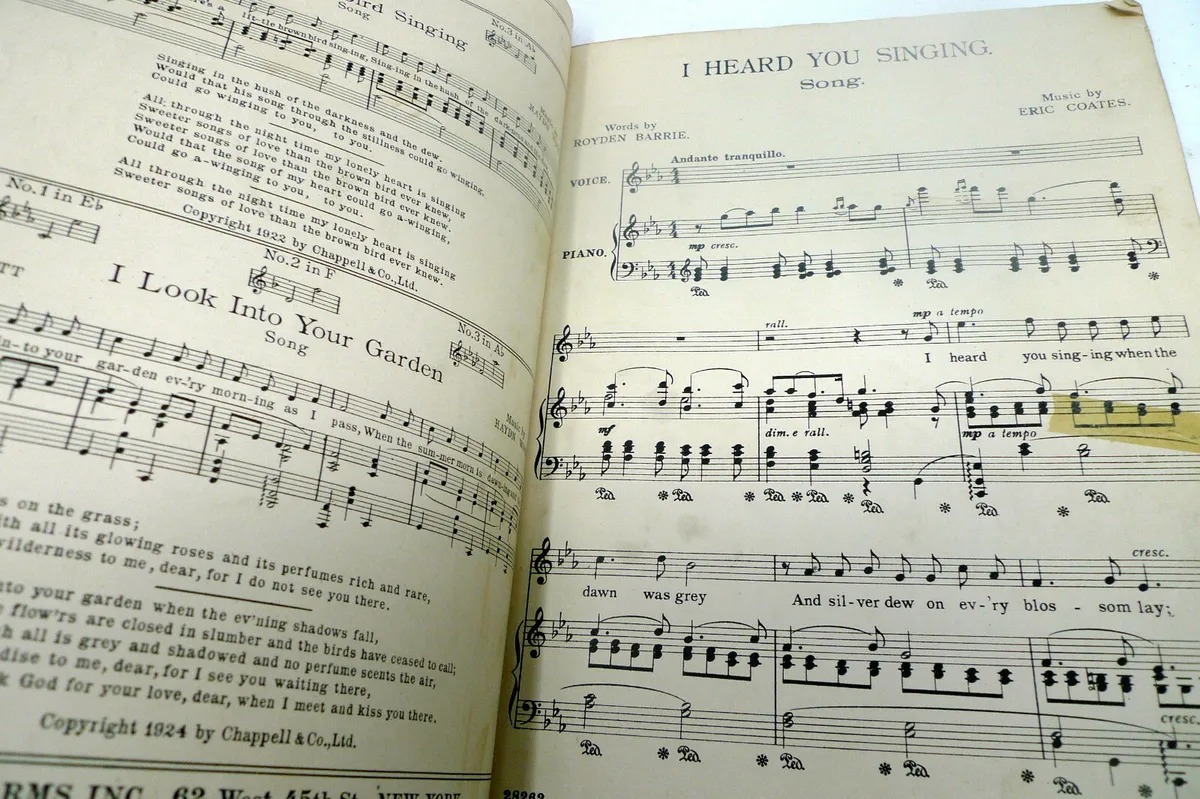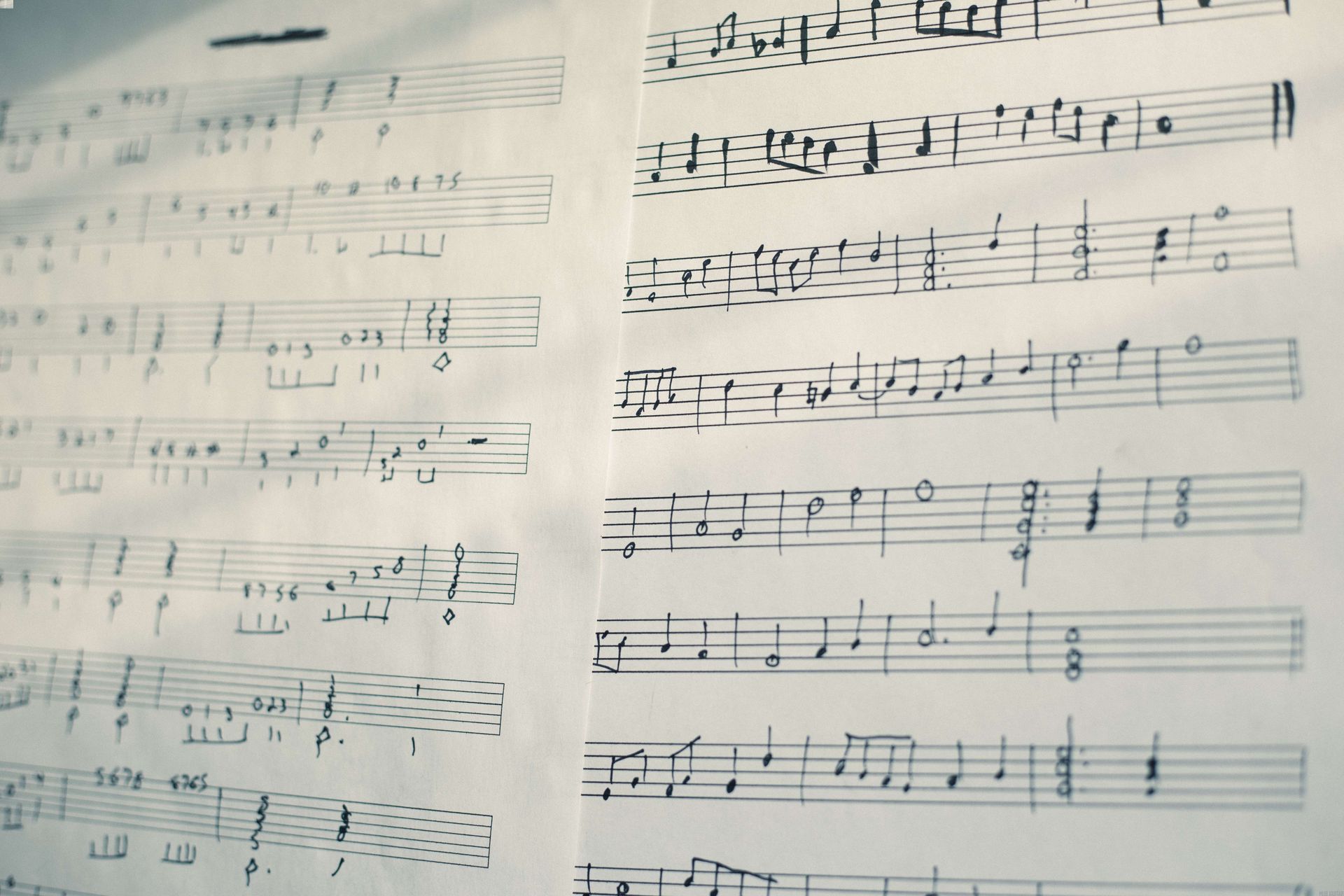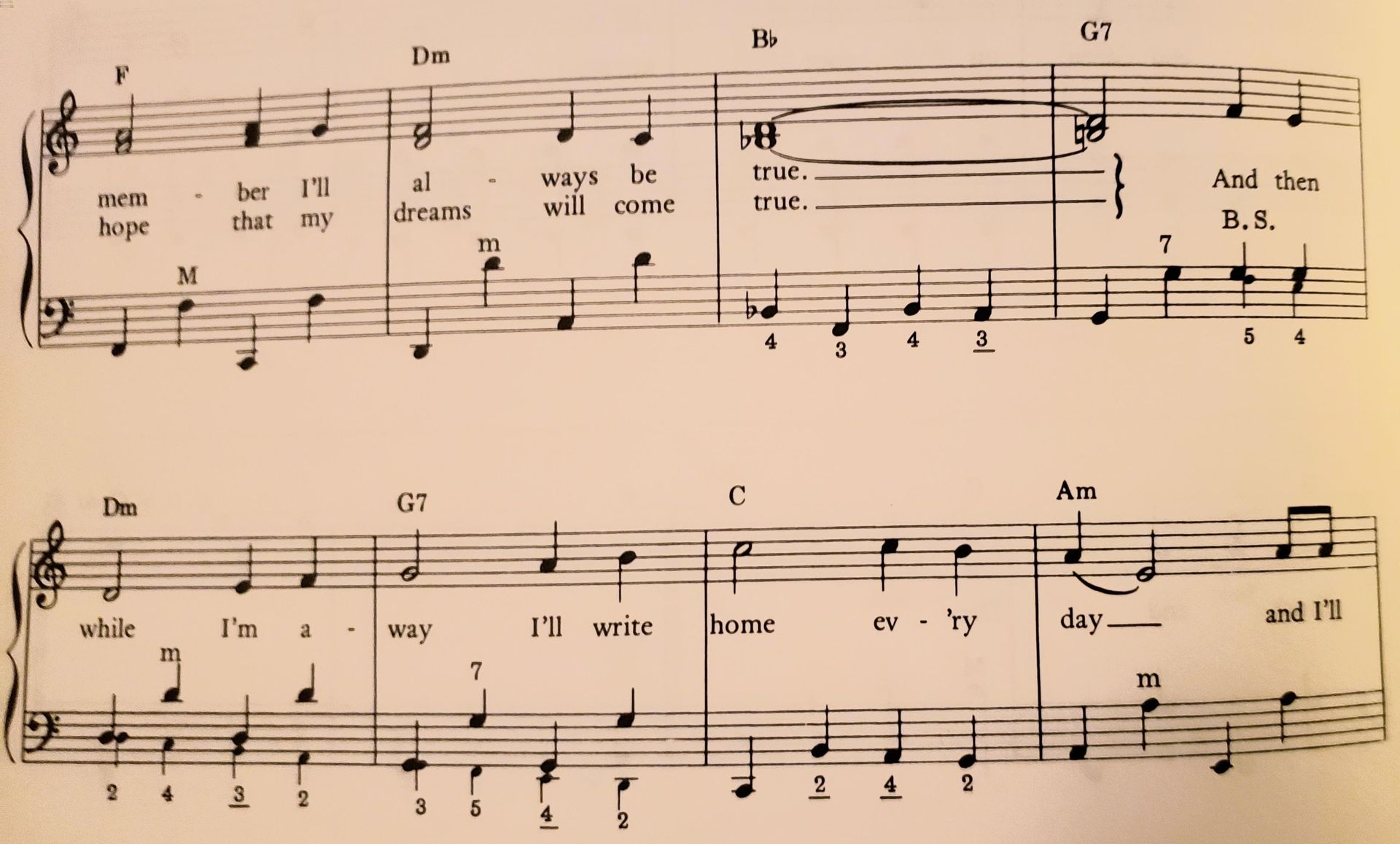Home>Production & Technology>Sheet Music>How To Memorize Sheet Music Quickly


Sheet Music
How To Memorize Sheet Music Quickly
Modified: January 28, 2024
Learn how to quickly memorize sheet music with effective techniques and strategies. Enhance your musical skills and improve your performance.
(Many of the links in this article redirect to a specific reviewed product. Your purchase of these products through affiliate links helps to generate commission for AudioLover.com, at no extra cost. Learn more)
Table of Contents
Introduction
Welcome to the world of sheet music! Whether you are a beginner musician or an experienced player looking to expand your repertoire, understanding and memorizing sheet music is an essential skill. Sheet music serves as a road map, guiding musicians through the notes, rhythms, and expressions that bring a composition to life. However, memorizing sheet music can sometimes be a daunting task.
Fortunately, with the right techniques and practice, anyone can learn to memorize sheet music quickly and effectively. In this article, we will explore various strategies and methods that will help you develop a solid foundation for memorization. By breaking down the musical notation, establishing a study routine, utilizing mnemonic devices, and applying visualization techniques, you will find that memorizing sheet music can be an enjoyable and rewarding process.
Whether you play the piano, guitar, violin, or any other musical instrument, the skills you acquire through memorization will greatly enhance your ability to perform with confidence and expressiveness. So, let’s dive in and unlock the secrets to memorizing sheet music!
Understanding the Basics of Sheet Music
Before we embark on the journey of memorizing sheet music, it is crucial to have a solid understanding of its fundamental elements. At its core, sheet music is a written representation of musical notation, consisting of symbols, notes, and various markings that convey important musical information. Let’s explore some of the key components:
- Staff: The staff consists of five horizontal lines and four spaces, upon which musical notes and symbols are placed. Each line and space represents a specific letter or pitch, indicating the note to be played.
- Notes: Notes are the building blocks of sheet music. They represent the pitch and duration of a sound. Notes are represented by oval-shaped symbols placed on the staff, with different positions indicating different pitches.
- Clef: The clef is a symbol placed at the beginning of the staff, indicating the range of pitches that the notes will represent. The most common clefs are the treble clef used for higher-pitched instruments such as the piano or violin and the bass clef used for lower-pitched instruments like the cello or bass guitar.
- Key Signature: The key signature is a set of sharps or flats placed at the beginning of each staff line, indicating the tonality or key of the piece. It helps identify the notes that should be played as sharps or flats throughout the composition.
- Time Signature: The time signature specifies the rhythmic structure of a piece. It consists of two numbers stacked on top of each other, with the top number indicating the number of beats per measure and the bottom number representing the rhythmic value of each beat.
- Dynamics and Articulation: Dynamics and articulation markings provide guidance on how to play the music with regard to volume, intensity, and phrasing. They include symbols such as pianissimo (very soft), fortissimo (very loud), staccato (short and detached), legato (smooth and connected), and many more.
By familiarizing yourself with these basic components of sheet music, you will gain a solid foundation for understanding and interpreting musical notation. This understanding will greatly assist you in the process of memorizing sheet music effectively and accurately.
Breaking Down the Musical Notation
Once you have a good grasp of the basics of sheet music, the next step in memorizing sheet music is to break down the musical notation into smaller, more manageable sections. By dissecting the composition into smaller parts, you can focus on each section individually and gradually piece together the entire piece. Here are a few strategies to help you break down the musical notation:
- Divide into Measures: A measure, also known as a bar, is a unit of music that contains a specific number of beats. Dividing the piece into measures allows you to tackle smaller chunks of music at a time. Work on memorizing one measure at a time and gradually connect them as you become more comfortable.
- Identify Repeat Patterns: Many pieces of sheet music contain repeated patterns or sections. Identify these patterns and focus on memorizing them first. Once you have these patterns memorized, you can easily navigate through the piece and build upon them.
- Break Down Challenging Passages: Difficult passages or sections within the music can be intimidating. Break these sections down into smaller fragments and practice them slowly and methodically. By focusing on mastering these challenging passages, you will gain confidence in your ability to play them accurately.
- Highlight Key Changes: Pay close attention to any key changes within the music. Mark these changes in your sheet music or mentally note them. Understanding where and when the key changes occur will help you navigate through the piece more efficiently.
- Analyze the Role of Each Instrument: If you’re playing in an ensemble or orchestra, it’s important to understand the role of each instrument in the piece. This analysis will give you a better understanding of how your part fits into the overall composition and will aid in memorizing your specific sections.
By breaking down the musical notation into smaller sections and focusing on each part individually, you’ll be able to memorize the piece more effectively. Take your time and practice regularly, gradually connecting the sections until you have the entire piece committed to memory.
Developing a Study Routine
When it comes to memorizing sheet music, consistency and regular practice are key. Developing a study routine will help you stay organized, motivated, and focused on your goal of memorization. Here are some tips for creating an effective study routine:
- Establish a Schedule: Set aside dedicated practice time every day or on specific days of the week. Consistency is important for building muscle memory and retaining the information over time.
- Start with Warm-Up Exercises: Begin each practice session with warm-up exercises to loosen your fingers, improve technique, and get into a musical mindset. This will help you transition smoothly into the sheet music you’re working on.
- Focus on Different Sections: Divide your practice session into focused sessions for different sections of the piece. Spend time on the challenging sections as well as the sections you already know well to maintain and reinforce your memorization skills.
- Use Repetition: Repetition is key in memorization. Repeat small sections of the music multiple times until you feel comfortable with them. Then gradually connect them together, repeating the entire piece to reinforce your memory.
- Gradually Increase Tempo: Start practicing at a slower tempo, focusing on accuracy and precision. As you become more comfortable with the piece, gradually increase the tempo to match the intended speed of the composition.
- Take Breaks: It’s important to take breaks during your practice session. This allows your brain and muscles to rest and consolidate the information you’ve learned. Short breaks can be refreshing and prevent mental fatigue.
- Record and Listen: Record yourself playing the sheet music and listen to the playback. This will give you a different perspective and help identify areas that need improvement. It can also serve as a reference to track your progress over time.
- Review Regularly: Once you have memorized a section or the entire piece, make sure to review it regularly. This will help reinforce your memory and prevent forgetting. Set aside dedicated review sessions to keep the music fresh in your mind.
By developing a consistent study routine, you’ll establish good practice habits and make steady progress in memorizing sheet music. Remember to be patient with yourself and celebrate small victories along the way. With time and dedication, you’ll be able to confidently perform the piece from memory.
Utilizing Mnemonic Devices
Mnemonic devices are powerful tools that can aid in memorizing sheet music by providing associations and triggers to help recall information. These techniques create mental connections that make it easier to remember complex musical patterns. Here are a few mnemonic devices you can use:
- Acronyms and Acrostics: Create acronyms or acrostics using the first letter of each note or phrase in a section of the music. For example, “Every Good Boy Deserves Fudge” can help you remember the notes that correspond to the lines of the treble clef: E G B D F.
- Visualization: Imagine the sheet music in your mind’s eye and visualize yourself playing it. Visualizing the notes, finger positions, and movements can enhance your ability to remember the music. You can also associate specific colors or images with different sections or notes to aid memory.
- Storytelling: Create a story or narrative that incorporates the musical elements of the piece. Assign characters or actions to different notes or sections. By weaving a narrative, you can create a memorable story that links to the sheet music in your mind.
- Rhythmic Phonetics: To remember complex rhythmic patterns, use syllables or words that match the rhythm. For example, using “apple” for a quarter note (1 syllable) and “banana” for an eighth note (2 syllables) can help you internalize and recall the rhythm more easily.
- Fingerboard Diagrams: For string instruments, create fingerboard diagrams that visually represent the finger positions corresponding to the notes on the sheet music. These diagrams can serve as a visual guide, helping you memorize the locations and transitions between the notes.
- Chunking: Break the musical piece into smaller chunks and memorize them individually. Then, mentally group these chunks together to form larger sections. By focusing on smaller segments, you reduce cognitive overload and make memorization more manageable.
Experiment with different mnemonic devices to find what works best for you. Everyone has different learning styles and preferences, so choose the techniques that resonate with you the most. The goal is to create strong mental associations that make it easier to recall the sheet music accurately.
Remember, mnemonic devices are meant to be a tool to aid in the memorization process. They should not replace regular practice and repetition. Use them as a supplement to reinforce your learning and enhance your overall memorization skills.
Practicing Regularly
Regular practice is the key to successful memorization of sheet music. Just like with any skill, consistent and focused practice sessions are crucial to developing strong memorization abilities. Here are some tips to help you establish a regular practice routine:
- Set Aside Dedicated Time: Prioritize your practice sessions and set aside dedicated time specifically for memorizing sheet music. Treat it as an important commitment and make it a part of your daily or weekly schedule.
- Practice in Short, Intensive Sessions: Instead of practicing for long, unfocused sessions, break your practice time into shorter, more intense sessions. This allows you to maintain focus and concentration, ensuring that you are making the most of your practice time.
- Focus on Quality over Quantity: It’s not about how many hours you practice; it’s about the quality of practice. Make each practice session count by staying focused, attentive, and engaged with the sheet music. Concentrate on accuracy, technique, and expressiveness.
- Start Slow and Gradually Increase Tempo: When learning a new piece, start by practicing at a slow tempo. This allows you to master the notes, fingerings, and technical challenges without sacrificing accuracy. As you become more comfortable, gradually increase the tempo to match the intended speed of the composition.
- Use a Metronome: A metronome is a valuable tool for practicing rhythmic accuracy and building a steady sense of timing. Incorporate a metronome into your practice routine to help you internalize the rhythm and maintain a consistent tempo.
- Practice Mindfully: When practicing, be fully present and engaged in the music. Avoid distractions and focus your attention on every note, rhythm, and expression. Mindful practice enhances your concentration, memorization, and overall performance skills.
- Record and Review: Record yourself during practice sessions and review the recordings. Listen for areas that need improvement and identify any mistakes or inconsistencies. This self-assessment helps you objectively evaluate your progress and refine your technique.
- Challenge Yourself: Push yourself out of your comfort zone by tackling more difficult pieces or sections. Challenging yourself helps develop your memorization skills further and allows you to grow as a musician.
- Stay Motivated: Find ways to stay motivated and inspired throughout your practice sessions. Set goals, reward yourself for achievements, and find joy in the process of learning and mastering sheet music. Remember why you love music and let that passion fuel your practice.
Consistency is key when it comes to practicing and memorizing sheet music. By establishing a regular practice routine and following these tips, you’ll build strong memorization skills and make steady progress in your musical journey.
Analyzing Patterns and Repetition
Patterns and repetition are common features in sheet music that can greatly aid in the memorization process. By analyzing these patterns and recognizing repetitive elements within a composition, you can effectively enhance your memorization skills. Here’s how to make the most of patterns and repetition:
- Identify Melodic and Rhythmic Patterns: Look for recurring melodic or rhythmic patterns throughout the piece. These can be specific motifs, sequences, or rhythmic motifs that appear multiple times. Focus on memorizing these patterns as a whole, as they will serve as a foundation for memorizing larger sections of the music.
- Mark and Highlight: Use colored pencils or highlighters to mark and highlight patterns and repetitions in your sheet music. This visual aid will draw your attention to these sections and help you recognize their presence more easily.
- Create Mental Associations: Establish mental associations or connections between patterns and certain sections of the music. For example, you can associate a particular melodic pattern with a specific theme or emotional expression. By linking patterns to certain meanings or emotions, you engage multiple senses and enhance your ability to remember them.
- Practice Sections with Variation: When encountering sections with variations of a pattern or theme, practice each variation separately. By isolating and focusing on the differences, you train your brain to distinguish between similar but distinct musical phrases or sections.
- Use Verbal Cues: Utter simple verbal cues or mnemonics that represent patterns or sequences in the music. This can involve using specific words or phrases that capture the essence of the pattern. Verbal cues engage language processing in your brain and aid in the overall memorization process.
- Apply Different Interpretations: Experiment with different interpretations and variations of the patterns and repetitions in the music. This not only adds depth and nuance to your performance but also helps solidify your understanding and memorization of these sections through exploration and creativity.
- Consider Harmonic Progressions: Pay attention to the underlying harmony and chord progressions in the piece. Often, these progressions create recurring patterns and sequences. Recognizing the harmonic structure can provide additional support in memorizing and understanding the overall musical context of the composition.
- Connect Patterns to Muscle Memory: Practice the patterns and repetitions until they become ingrained in your muscle memory. By repeating them consistently, your fingers or bowing arm will develop a natural feel for these sections, making them easier to recall during performance.
Analyzing patterns and repetition in sheet music is an effective way to break down the composition into smaller, recognizable elements. By understanding and memorizing these patterns, you will enhance your overall fluency and confidence in performing the music.
Using Visualization Techniques
Visualization is a powerful tool that can greatly assist in the memorization of sheet music. By creating vivid mental images of the music, you engage your imagination and strengthen your memory recall. Here are some techniques for incorporating visualization into your practice:
- Create a Mental Map: Visualize the layout of the sheet music in your mind. Imagine the staff, notes, dynamics, and other markings. See the music in your mind’s eye as if it were physically in front of you. This mental map helps you navigate through the piece and aids in memorization.
- Picture Finger Movements and Positions: Visualize your fingers or hands playing the notes on your instrument. Visualize the correct fingerings, hand positions, and movements required for each note and passage. This mental imagery strengthens the connection between the visual image and the physical action, reinforcing your muscle memory.
- Associate Colors and Emotions: Assign colors or emotions to different sections or phrases in the music. For example, you might associate a blue color with a serene passage or a red color with an energetic section. By associating colors and emotions, you create additional mental markers that aid in recall and expression.
- Imagine the Sound: As you visualize the sheet music, imagine the sound it produces. Hear the melodies and harmonies in your mind, paying attention to dynamics, articulations, and phrasing. This auditory visualization helps internalize the music and contributes to accurate interpretation.
- Picture the Performance Setting: Visualize yourself performing the piece in a specific setting or venue. Imagine the stage, audience, and your own confident and expressive performance. This visualization technique helps build confidence and prepares you mentally for actual performances.
- Use Guided Imagery: Engage in guided imagery exercises where you imagine yourself playing the sheet music flawlessly, with every note and expression perfectly executed. Visualize the physical sensations, emotions, and auditory experience as vividly as possible. This mental rehearsal strengthens the neural pathways associated with the music, enhancing memorization and performance skills.
- Connect Visual Images to Musical Elements: Form mental associations between visual images and specific musical elements. For instance, you might imagine a waterfall for a cascading arpeggio or a soaring bird for a melodic line. By creating these connections, you link visual imagery to the music, making it easier to remember.
- Practice Visualization Away from the Instrument: Spend dedicated time visualizing the sheet music away from your instrument. Close your eyes and mentally go through the music, visualizing every aspect. This allows you to focus solely on the visualization process and strengthens your ability to recall the music without relying on muscle memory.
Visualization techniques can be incredibly powerful in enhancing your memorization of sheet music. Through vivid mental imagery and associations, you activate multiple senses and create a deeper connection with the music. By incorporating visualization into your practice routine, you’ll develop a strong mental representation of the sheet music, leading to more confident and expressive performances.
Applying Music Theory Knowledge
Music theory serves as a valuable resource for memorizing sheet music. Understanding the underlying principles of music can provide insights into the structure, harmony, and composition of a piece. Here are some ways to apply music theory knowledge to enhance your memorization:
- Analyze the Structure: Break down the piece into its structural components, such as sections, phrases, and motifs. Identify the relationships between these elements and how they contribute to the overall form of the composition. Having a clear understanding of the structure helps you navigate through the music and grasp its organization.
- Recognize Chord Progressions: Pay attention to the chord progressions used in the music. Identify the harmonic patterns and chord changes that occur throughout the piece. Understanding the relationship between chords enables you to anticipate and remember the harmonic structure of the composition.
- Identify Key Changes: Take note of any key changes that occur in the piece. Key changes can significantly affect the mood and character of the music. Recognizing and understanding these shifts will aid in memorization, as it helps you mentally prepare for the adjustments in scales and tonalities.
- Study the Scales and Modes: Familiarize yourself with the scales and modes utilized in the composition. Understanding the scale degrees and intervals can help you recognize and memorize melodic patterns more easily. Knowing the specific scales used in different sections of the music will guide your interpretation and memorization process.
- Analyze Harmonic Function: Study the functional relationships among chords in the music. Identify dominant and tonic chords, as well as other harmonic progressions that create tension and resolution. This understanding helps you anticipate melodic movements and enhances your ability to memorize and interpret the music accurately.
- Study Rhythmic Patterns: Analyze the rhythmic patterns and meters present in the piece. Pay attention to the division of beats, syncopations, and patterns that repeat throughout the composition. Recognizing and internalizing these rhythmic elements facilitates memorization, as you can anticipate and feel the pulse of the music.
- Apply Music Theory Terminology: Familiarize yourself with music theory terminology and symbols. Understand concepts such as dynamics, articulations, phrasing, and other expressive markings. Knowing these terms enables you to interpret the sheet music accurately and memorize the various nuances and expressions within the composition.
- Use Theory as a Guide: While memorizing the sheet music, refer back to your music theory knowledge as a guide. Identify patterns, chord progressions, and other musical elements that you’ve learned during your study of music theory. This conscious connection between theory and practice solidifies your understanding and memorization of the music.
Applying your music theory knowledge to the memorization process deepens your understanding of the composition and enhances your ability to internalize and interpret the music accurately. By combining music theory and memorization, you develop a comprehensive approach to learning and performing sheet music.
Seeking Guidance from a Music Teacher
When it comes to memorizing sheet music, seeking guidance from a qualified music teacher can greatly support your progress. A knowledgeable teacher can provide valuable insight, personalized instruction, and helpful techniques to enhance your memorization skills. Here’s how a music teacher can assist you:
- Expertise and Experience: A music teacher possesses extensive knowledge and experience in the field. They are well-versed in music theory, performance techniques, and memorization strategies. Their expertise allows them to provide invaluable guidance and instruction tailored to your specific needs.
- Personalized Instruction: A music teacher evaluates your current skill level, assesses your strengths and weaknesses, and develops a personalized plan to improve your memorization skills. They can identify areas for improvement and provide targeted exercises and activities to enhance your memorization process.
- Techniques and Strategies: A music teacher can introduce you to a range of techniques and strategies for memorizing sheet music effectively. They may suggest specific mnemonic devices, practice routines, visualization exercises, or other methods that align with your learning style and goals. Their guidance ensures that you learn and implement the most effective strategies for your individual needs.
- Feedback and Corrections: A teacher provides valuable feedback on your performance and progress. They can identify errors, offer suggestions for improvement, and correct any technical or interpretive issues in your playing. This constructive feedback helps refine your memorization skills and fine-tune your musical interpretation.
- Accountability and Motivation: Working with a music teacher provides a level of accountability and motivation. Regular lessons and check-ins with a teacher keep you on track and encourage consistent practice. Their encouragement and support inspire you to stay focused and motivated in your memorization journey.
- Performance Preparation: A music teacher can guide you in preparing for performances. They can simulate performance conditions, offer insights on stage presence, and provide tips for managing nerves. This preparation ensures that you are well-prepared for playing from memory in front of an audience.
- Overall Musical Development: Beyond memorization skills, a music teacher can help you grow as a well-rounded musician. They can help you understand the broader musical context, interpretive aspects, and stylistic elements of the sheet music you are working on. This holistic approach enriches your musicality and deepens your understanding of the piece.
Enlisting the guidance of a music teacher can make a significant difference in your memorization journey. Their expertise, personalized instruction, feedback, and support help you develop strong memorization skills and become a more proficient musician overall.
Conclusion
Memorizing sheet music is an important skill for any musician, and with the right techniques and practice, it can be an enjoyable and rewarding process. Throughout this article, we have explored various strategies to help you effectively memorize sheet music.
Understanding the basics of sheet music, breaking down the musical notation, developing a study routine, and utilizing mnemonic devices are all valuable tools in your memorization toolbox. Practicing regularly, analyzing patterns and repetition, using visualization techniques, applying music theory knowledge, and seeking guidance from a music teacher are additional methods that can greatly enhance your memorization skills.
Remember, the key to successful memorization lies in consistency, patience, and perseverance. Regular practice, along with a thoughtful and structured approach, is essential for solidifying your understanding and recall of the sheet music.
As you embark on your memorization journey, enjoy the process of delving into the intricacies of the music, connecting with the emotions it evokes, and discovering the beauty of playing from memory. Let your passion for the music drive your commitment and dedication to the memorization process.
By incorporating these strategies into your practice routine and staying focused on your goals, you will develop a strong foundation for memorizing sheet music. Your ability to perform confidently and expressively from memory will undoubtedly enhance your musical journey and bring joy to both yourself and your audience.

